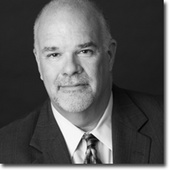The Financial Crimes Enforcement Network (FinCEN) released a new analysis of suspicious activity related to possible mortgage loan fraud in the third quarter of 2009. The report shows that in the third quarter of 2009, depository institution filer's submitted 15,697 mortgage loan fraud (MLF) SARs, a 7.5 percent increase over the same period in 2008.
The analysis found that suspicious activity reports (SARs) indicating suspicious activity by:
- Loan Modification's
- Foreclosure Specialists
Two types of schemes were most common:
1. The fraudsters conned homeowners into signing quit-claim deeds to their properties and then sold homes from under the former owners to straw borrowers; the homeowners subsequently received eviction notices.
2. The fraudsters falsely claimed affiliations with lenders to convince distressed homeowners to pay large advance fees for modification services, but failed to take any action on the homeowners? behalf.
"FinCEN?s tracking of suspected mortgage loan fraud and foreclosure rescue scam SARs has contributed greatly to law enforcement's ability to better understand the nature of this insidious crime," said FinCEN Director James H. Freis, Jr. "FinCEN?s efforts in fighting mortgage fraud and foreclosure rescue scams remain a priority. We are harnessing all of our authorities to support this fight."
Other Findings in the report include:
- Filers of SARs reported foreclosure and loan modification fraud that included occupancy misrepresentation, Social Security number discrepancies, and altered or forged documentation.
- California and Florida represented a combined 42 percent of reported SAR subjects in the study population. Filers most frequently reported borrowers as subjects, relating subject descriptions as "Borrower? or "Customer? in a combined 57 percent of MLF SARs.
- Thirty-five percent of the SARs examined in the report indicated an amount of $100,000 to $250,000.
- Thirty-two percent of these SARs filed involved suspected amounts of $250,000 up to $500,000.
- One third of MLF SARs examined in this report indicated secondary activities.
- with a "False Statement? as the most frequently reported category.
Although subjects of Mortgage Loan Fraud (MLF) SARs were primarily borrowers, they also reported industry insiders as subjects, including loan officers, underwriters, and alleged loan modification agents.
SARs involving loan modifications described potential fraud in either the application for the loan modification, or in the older loan which came under review subsequent to the modification application.
An increasing number of filers submitted SARs noting suspicious activity in connection with actual or purported foreclosure rescue specialists. FinCEN is conducting additional analyses to examine mortgage loan fraud, foreclosure rescue scams and other financial fraud, and will further explore reported activities, locations, and subjects.
Credit card processors noted multiple transaction charge-backs in accounts held by clients later determined to be loan modification or foreclosure rescue specialists, after homeowners complained that the alleged specialist failed to deliver services.
Homeowners pay for the cost of mortgage fraud through increased rates and fees and sometimes through higher property taxes because of inflated appraisals. We must combat this blight, as residents in communities across the country are seeing their neighborhoods devastated because of fraud." These significant costs are just the local after effects. What about the bigger picture? How about the national level? Many of the quotes I use for statistics have come from government officials, be they FBI agents or department heads. You know when the government gets involved in a problem, not only is it big but costly. Someone has to pay those agents to track down fraud, someone has to pay to prosecute all those fraudsters, and if convicted someone has to pay to feed, clothe, and shelter them.
Who? Who will bear the brunt of these costs? You, me, and hundreds of thousands of unwitting homeowners who would never in a million years think of committing real estate fraud.
There is no doubt that homeowners pay the price of mortgage fraud. The only way such costs can be avoided is to eliminate, or greatly reduce, the problem. That means you, me, and the hundreds of thousands of unwitting homeowners who would never in a million years think of committing real estate fraud are going to have to start thinking about it, and thinking about it soon.
The faster we can all help prevent mortgage fraud, the sooner all of these costs could be reduced, thus saving homeowners and we the taxpayers money...
Michael S. Richardson
Director/Mortgage Fraud Services
Author of "An American Epidemic, Mortgage Fraud a Serious Business"
www.mortgagefraudsolutions.com
Follow Me: The Mortgage Examiner
Twitter: Focusonfraud

Comments(2)